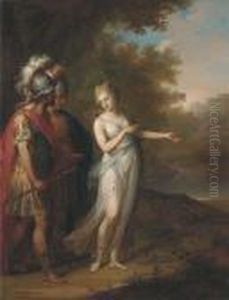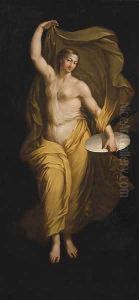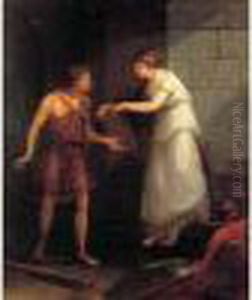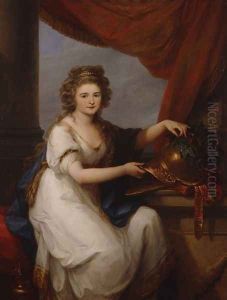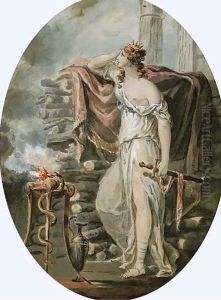





Dido, Queen of Carthage, mourning the departure of Aeneas
-
About Reproduction
Discover the allure of art with our faithful reproduction of "Dido, Queen of Carthage, mourning the departure of Aeneas", originally brought to life by the talented Angelica Kauffmann. Unlike posters or prints, our hand-painted oil painting breathes an unique sense of depth and texture into your space. Every detail, every stroke, and every texture is meticulously recreated, paying the perfect homage to Angelica Kauffmann and his artistic vision.
Owning this piece is more than just decoration - it's a statement of your refined taste in art. Let the vibrant colors and intricate details of this replica serve as a daily reminder of the beauty in our world. Elevate your decor and appreciate the richness of art with our replica of this masterpiece.
-
Painting Description
"Dido, Queen of Carthage, Mourning the Departure of Aeneas" is a notable painting by Swiss neoclassical artist Angelica Kauffmann, created in the late 18th century. The artwork is a poignant representation of a scene from Virgil's epic poem, the "Aeneid," where Dido, the queen of Carthage, is depicted in the throes of despair following the departure of her lover, Aeneas, who is destined to found Rome. Kauffmann's mastery in capturing the emotional intensity of the scene is evident in the expressive portrayal of Dido, whose grief is central to the composition.
Angelica Kauffmann (1741–1807) was a prominent figure in the Neoclassical movement, celebrated for her historical and mythological paintings, as well as for her role in shaping the art culture of her time. As one of the few successful female artists of her era, Kauffmann's works were known for their sensitivity, elegance, and the depiction of strong female characters, often from classical literature and history.
"Dido, Queen of Carthage, Mourning the Departure of Aeneas" exemplifies Kauffmann's skillful use of color, composition, and the classical ideals of beauty and pathos. The painting is characterized by its harmonious palette and the graceful figures that echo the art of antiquity, reflecting the neoclassical pursuit of idealized forms and moral virtue. Kauffmann's Dido is often interpreted as a symbol of female virtue and sacrifice, resonating with the broader themes of love, duty, and the tragic consequences of their conflict.
This work is significant not only for its artistic merit but also for its cultural and historical context, as it reflects the Enlightenment's fascination with classical antiquity and the role of women in the arts. The painting has been exhibited in various galleries and has been the subject of scholarly analysis, contributing to the understanding of 18th-century art and the legacy of Angelica Kauffmann.
-
Lead Time & Shipping
When you order this oil painting replica, it typically takes 2-3 weeks to paint. If the artwork is more complex, it might need a little more time to ensure the best quality. Once it's ready, we'll send you a photo for your approval. After you give the green light, we'll ship it to you for free.
-
Return & Refund
We believe in the quality of our hand-painted oil painting reproductions, and your satisfaction is our priority. If for any reason, you are not completely satisfied with your purchase, we offer a 45-day return policy. You can return your artwork within 45 days of receipt and receive a full refund. Please note that the artwork must be returned in the original packaging and in the same condition as it was received.







